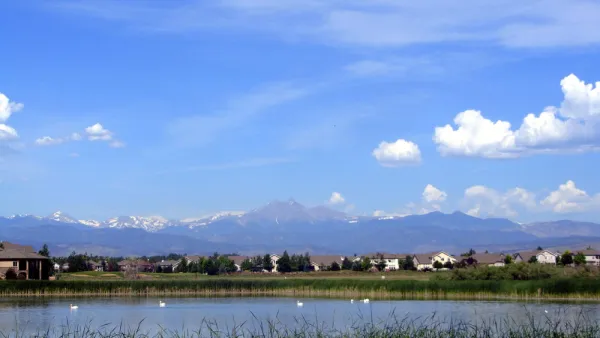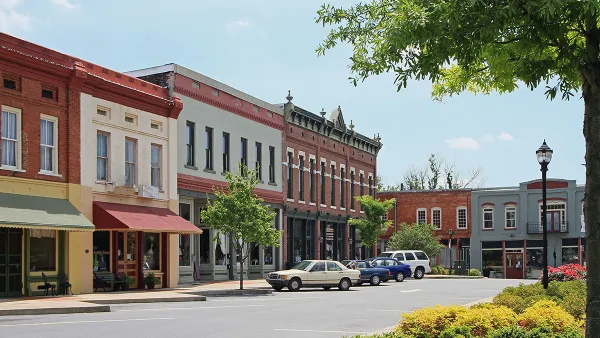Opponents of high- and mid-rise development often use the term "vertical sprawl." But in fact there is little similarity between high-rise infill and suburban sprawl: the major arguments against one do not apply to the other.
In the ongoing controversy over height limits of various types, one phrase commonly bandied about is “vertical sprawl.” Some argue that tall infill development is itself “sprawl” – presumably because just as regular sprawl extends horizontally into the countryside, taller buildings extend vertically into the airspace.
But in fact, there is no similarity between taller buildings (even high-rises) and horizontal sprawl, because the major concerns about sprawl are unrelated to height, and vice versa. To examine why this is so, let’s ask ourselves: why should we care about traditional sprawl?
The most commonly voiced concerns, as far as I can see, fall into two categories:
*Environmental. Environmentalists worry that sprawl leads to more driving, and thus to more air pollution and climate change. By contrast, infill development (whether the development is two stories high or thirty) in transit-friendly areas actually reduces driving by increasing the number of people with access to public transit.
*Social equity and quality of life. Sprawl means that jobs and other social amenities move to places without public transit, thus making it impossible for persons without cars to reach jobs. Residential infill development (whether the development is two stories high or thirty) means that more people can live in areas with public transit, and commercial infill increases the number of people whose jobs are reachable by transit.
Admittedly, it could be argued that infill development leads to gentrification, which in turn leads to displacement of the poor. Even if this argument had some validity (a subject best addressed in a separate post) it is irrelevant to height. Even if it was true that infill development increased real estate prices to the extent that poor people were driven into car-dependent suburbia, this would be the case whether the development consisted of two-story walkups or twenty-story towers.
It seems to me that the most common concerns about high- and mid-rise infill have nothing to do with sprawl. Some people have aesthetic concerns about taller buildings- but even if both types of structures are both unattractive, a high-rise tower is not physically similar to a strip mall any more than a morally unattractive gossiping neighbor is similar to a morally unattractive dictator 4000 miles away.
NIMBY (Not In My Back Yard) attacks on infill development often center on traffic and parking. But these arguments are often a defense of existing sprawl rather than an honest attempt to compare horizontal sprawl and high-rises: if you really believe that compact development creates traffic congestion, you must therefore believe that sprawl eliminates congestion, and that sprawl is a good thing. And if you believe that land’s highest and best use is for cars rather than people, you should think that sprawl is perfectly fine. In any event these arguments are really attacks on infill and density generally, not attacks on high-rises specifically.

Analysis: Cybertruck Fatality Rate Far Exceeds That of Ford Pinto
The Tesla Cybertruck was recalled seven times last year.

National Parks Layoffs Will Cause Communities to Lose Billions
Thousands of essential park workers were laid off this week, just before the busy spring break season.

Retro-silient?: America’s First “Eco-burb,” The Woodlands Turns 50
A master-planned community north of Houston offers lessons on green infrastructure and resilient design, but falls short of its founder’s lofty affordability and walkability goals.

Test News Post 1
This is a summary

Analysis: Cybertruck Fatality Rate Far Exceeds That of Ford Pinto
The Tesla Cybertruck was recalled seven times last year.

Test News Headline 46
Test for the image on the front page.
Urban Design for Planners 1: Software Tools
This six-course series explores essential urban design concepts using open source software and equips planners with the tools they need to participate fully in the urban design process.
Planning for Universal Design
Learn the tools for implementing Universal Design in planning regulations.
EMC Planning Group, Inc.
Planetizen
Planetizen
Mpact (formerly Rail~Volution)
Great Falls Development Authority, Inc.
HUDs Office of Policy Development and Research
NYU Wagner Graduate School of Public Service





























